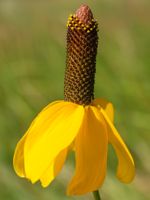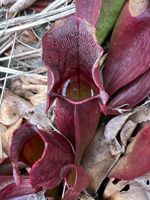Mon-Fri 9am - 5pm Mountain time
Upright Prairie Coneflower vs Purple Pitcher Plant
Ratibida columnifera
Sarracenia purpurea
NOT AVAILABLE THIS SEASON - MIGHT RETURN
CUSTOM GROW
Upright Prairie Coneflower is a native perennial wildflower known for its vibrant flowers, which range from golden yellow to dark rust-red with yellow edges. Rising on tall, slender stems, the flowers’ drooping petals surround a central cone. They bloom from midsummer into fall, attracting butterflies, bees, and other pollinators. After blooming, the florets on the cone eventually develop into seeds, which provide a food source for birds.
Its upright growth habit allows it to grow in clusters, creating a striking display. Due to its deep taproot, Upright Prairie Coneflower is drought tolerant, making it well suited to dry areas and xeriscape gardens. Low-maintenance and deer-resistant, this wildflower is a great choice for adding vibrant color and ecological value to any landscape.
Purple Pitcher Plant is a native carnivorous plant, easily recognized by its purple-tinged, tubular pitchers that capture and digest insects. The nectar along the rim attracts insects to the pitcher, where slippery surfaces and downward-pointing hairs cause them to fall into the fluid below. Once inside, they are broken down, providing nutrients that allow the plant to thrive in nutrient-poor soils.
The plant produces nodding, purple-red flowers held high above the leaves. Interestingly, these blooms are pollinated by the Pitcher Plant Fly (Fletcherimyia fletcheri), whose larvae live in the fluid of the pitchers and feed on some of the trapped insects. It can be found in bogs, fens, and other wetlands. It is well-suited for wetland gardens, restoration, and naturalisation projects.
The Purple Pitcher Plant can be challenging to grow because of its specific requirements. It thrives in consistently moist (but not waterlogged), acidic soil, with a peat-and-sand mix typically recommended. The plant is sensitive to fertilizers, dissolved salts, and chlorinated water. When given the right conditions, full sun will bring out its brightest colors.
The Purple Pitcher Plant is the provincial flower of Newfoundland & Labrador.

